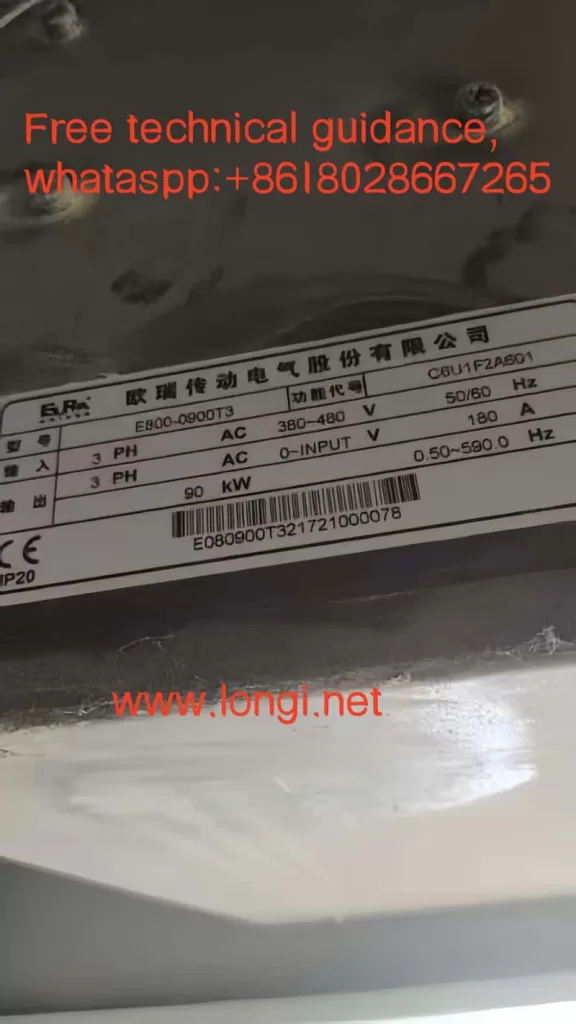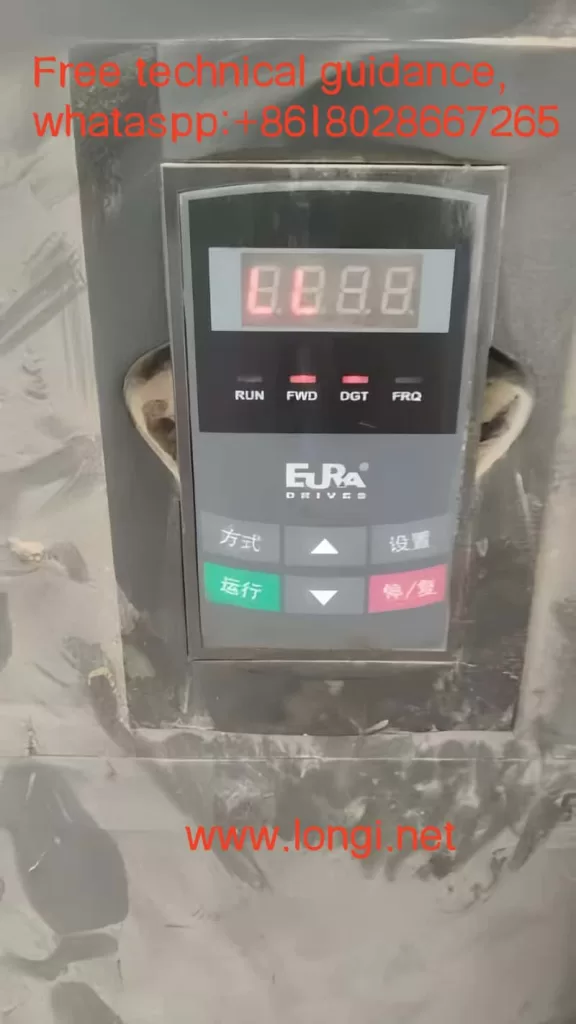Introduction
The E800 series of Eura Drives inverters is a widely used device in the field of industrial control, with its stability and reliability being crucial to users’ production activities. However, in practical applications, users may encounter various faults and issues, among which the “LL” fault displayed upon power-up is a particularly perplexing one.

The Meaning of “LL” Fault
Upon power-up, if the E800 series inverter of Eura Drives displays the “LL” fault code and cannot be reset by pressing any buttons, it typically indicates a specific issue with the inverter. Unfortunately, the user manual may not explicitly state the meaning of the “LL” fault code. However, within the communication section, under the explanation of communication address meanings, the operational status parameter address 1005 mentions the inverter status: “OXOC (LL)”.
Despite the brief mention, there is no further elaboration on the “LL” fault code in the manual. Nevertheless, based on our experience and understanding of inverter fault codes, the “LL” fault on Eura Drives E800 series inverters generally indicates a low voltage fault. This means that the input voltage to the inverter is below the acceptable range, causing the inverter to malfunction and display the “LL” fault code.

Solutions to the “LL” Fault
To resolve the “LL” fault on Eura Drives E800 series inverters, the following steps can be taken:
- Check the Input Voltage:
- Verify that the input voltage supplied to the inverter is within the specified range. For the E800 series, the input voltage range is typically three-phase 380V to 480V (with a tolerance of +10% to -15%) or single-phase 220V to 240V (with a tolerance of ±15%).
- Use a voltmeter to measure the voltage at the inverter’s input terminals.
- Inspect the Power Supply:
- Ensure that the power supply is stable and reliable. Check for any potential issues such as voltage fluctuations, surges, or drops that may affect the input voltage to the inverter.
- Review the Wiring:
- Examine the wiring between the power source and the inverter to ensure that it is correct and free from any damage or loose connections.
- Check the Fuse and Circuit Breaker:
- Verify that the fuse or circuit breaker protecting the inverter’s power supply circuit is not blown or tripped. Replace it if necessary.
- Consult the Manual and Technical Support:
- If the issue persists after checking the above points, refer to the user manual for additional troubleshooting steps or contact Eura Drives’ technical support for assistance.
- Reset the Inverter:
- Once the issue with the input voltage has been resolved, try resetting the inverter by pressing the reset button or cycling the power to see if the “LL” fault code clears.
Conclusion
The “LL” fault on Eura Drives E800 series inverters is generally indicative of a low voltage issue. By carefully checking the input voltage, power supply, wiring, fuse, and circuit breaker, and taking appropriate corrective actions, users can often resolve this fault and restore normal operation of the inverter. If the problem persists, seeking assistance from the manufacturer’s technical support is recommended.
